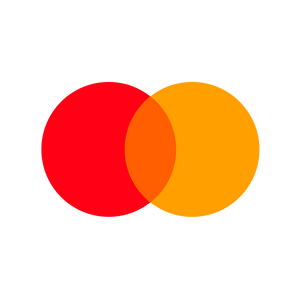April Birthstone: All About Diamonds

Diamonds are undoubtedly the most popular choice in the world of jewellery. Often referred to as a 'girl's best friend,' they hold a special place in the hearts of many— and if you're an April baby, well, they're practically your birthright!
This sparkle deserves to be known and appreciated time and time again, so here we go!
All About Diamond
Made of carbon, diamonds are ancient and incredibly tough, making them perfect for any occasion, or excuse to add some bling to life's milestones. So, whether you're rocking them as your April birthstone, popping the question or gifting them on your 60th anniversary, diamonds always steal the spotlight!
Benefits of Diamonds:
-
Diamonds are a timeless investment, retaining value over time.
- Passed down through generations, diamond jewellery becomes cherished heirlooms.
- Resilient and durable, diamonds are perfect for everyday wear.
- They make meaningful gifts for special occasions.
- Their unique sparkle of this natural gemstone captures attention like nothing else!
- Versatile enough for both formal and casual settings.
- Wearing diamond jewellery boosts self-confidence.
- In Vedic astrology, diamonds are linked to healing properties, promoting wellness and tranquillity.
Characteristics:
Mineral: Carbon
Chemistry: Formula mass of 12.01 g/mol
Crystal Structure: Cubic crystal system
Colour: Ranges from colourless to various hues
Refractive index: 2.418 at 500 nm
Specific gravity: approximately 3.52.
Mohs Hardness: 10 (making it the hardest mineral)
Places mined : South Africa, Russia, Botswana, Canada, Australia
Zodiac Sign: Aries and Leo.
Planet: Venus
Symbol: Eternal beauty, love and commitment.
Popular shapes: brilliant cut, princess, oval, heart, emerald, pear, and cushion cuts.
The 4 C’s
Understanding the 4 C's of diamonds is crucial when hunting for a diamond jewellery, as they collectively define its quality, beauty, and value. Each C interacts with the others working together to give you the bling of your dreams. 

Colour:
So, diamonds come in a spectrum from colourless to light yellow or brown, and those colourless ones? They're like finding a unicorn—super rare! We grade these beauties from D (colourless) to Z (light yellow or brown), and you'll find the D-F diamonds are like the holy grail of sparkle. Oh, and here's a fun fact: ever heard of fluorescence? It's this cool natural phenomenon in diamonds that can make them appear even whiter.
Clarity:
Clarity tells us if there are any inclusions (inside bits) or blemishes (outside marks). You know, those rare diamonds without any visible imperfections? They're like diamonds in the rough, highly prized! We grade them from FL (flawless) to I (included), and we tell you, FL is like finding a diamond in a sea of coal. The cut of a diamond can affect how inclusions are visible, especially in step-cut diamonds like emerald cuts.
Carat:
Carat measures a diamond's weight, with one carat being equal to 200 milligrams. So, well— the bigger the carat weight, the bigger the price tag! But note that carat weight alone isn't the price determiner. Cut plays a huge role in how big the diamond appears, and trust us, a well-cut diamond can make all the difference! So, it's not just about the weight, it's about how it's cut.
Cuts:
The cut of a diamond is like its personality, defining its brilliance and sparkle. A well-cut diamond is literally like a disco ball, throwing light in every direction and stealing the show. We grade cuts from poor to excellent, with each shape having its own unique characteristics. Whether you're into round brilliants, emeralds, or princess cuts, there's a cut out there for every style and preference.
Treatments:
Diamond treatments are artificial methods used to enhance the color or clarity of diamonds. These treatments aim to improve a diamond's appearance and are not forever, so it's like adding a bit of makeup to your diamond. Common diamond treatments include laser drilling, fracture filling, irradiation, high-pressure high-temperature (HPHT) treatment, annealing, and coatings.
- Laser drilling zaps away those pesky dark spots or lightens them up a bit by removing inclusions while Fracture Filling is used to fill cracks.
- Irradiation alters color by changing the crystal lattice.
- HPHT treatment turns up the heat and pressure to give diamonds a color makeover.
- Coatings involve applying a thin layer of chemicals or plastics to alter the gemstone color temporarily.
So, if you're in the market for bling, make sure you know what treatments your diamond has been through—it's all about making informed choices!
Caring for Diamond Jewellery:
- Be cautious with creams for dry skin as they can temporarily discolor diamonds.
- Regularly check settings to ensure stones are secure and not loosening due to excessive oil and grime.
- Clean diamond jewellery gently by soaking it overnight in a water and soap solution, then rinsing and cleaning with a soft cloth.
- Store diamond jewellery wrapped in soft tissues to prevent moisture and avoid any discoloration of the stones.
- Due to its light and transparent nature, diamonds easily show dirt and grime on their surface. But don't fret—it's just a bit of external buildup.
FAQ
What factors determine the value of a diamond?
The value is determined by cut, colour, clarity, and carat weight, with a well-cut and transparent diamond being highly valued.
Can diamonds be treated to enhance their color?
Yes, treatments like irradiation and coatings can enhance colour temporarily.













